Imagine that it’s 1942, and you’re a British park ranger going about your business patrolling India’s Nanda Devi National Park at about 16,000 feet, when you stumble upon a glacial lake:

Photo Credit: Undiscovered Indian Treasures
Maybe you go a bit closer to these crystal clear waters:

Photo Credit: Undiscovered Indian Treasures
Because this is a beautiful moment.
A gift from nature that you want to explore…
And that’s when you find the bones:
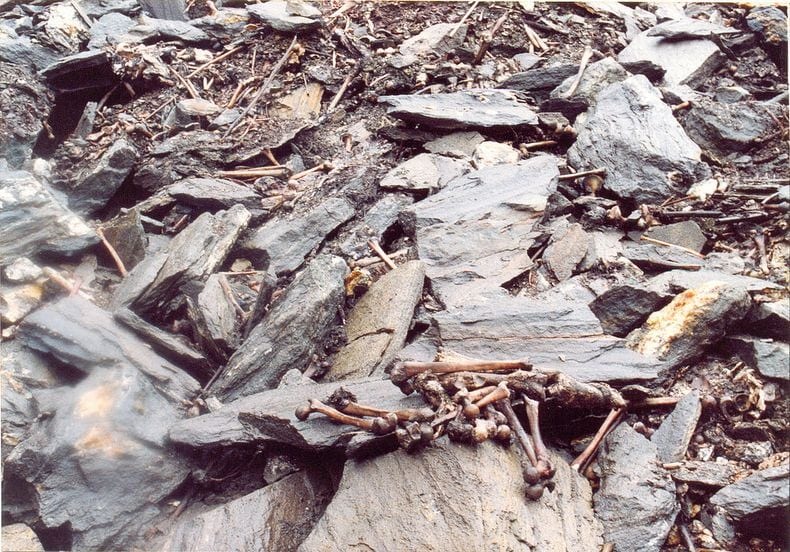
Photo Credit: Daily Chaska
Like hundreds of human skeletons worth of bones:

Photo Credit: Wikipedia/Schwiki/CC
Everywhere you turn, more bones:
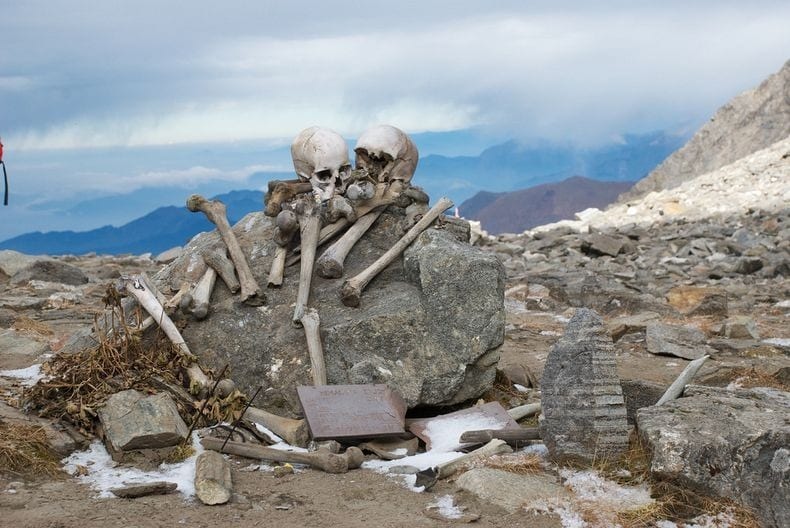
Photo Credit: Adventure Fort
Littered all around the edge of the lake.
And some of them look pretty fresh, for bones:
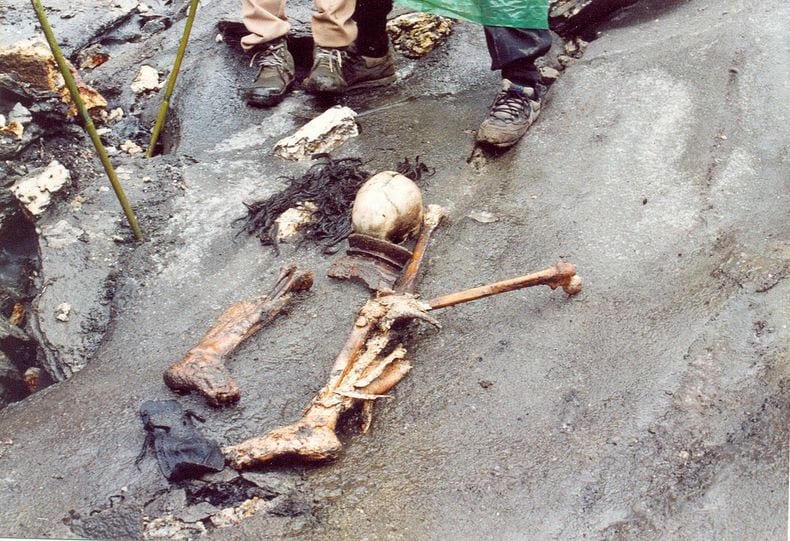
Photo Credit: flickr/Dinesh Pundir
So you probably GTFO ASAP, right?!
Absolutely.
Then you let your superior officers and whatever scientists they call in deal with the burning question, namely, “Where’d all the skeletons come from?”
And you go home to take a long shower.
Well, the British government really wanted to figure this out.
It was 1942, after all. Were the Japanese trying to sneak into India?
That was pretty much the thinking at the time. So they sent a team to investigate.
And that’s when things got even weirder:

Photo Credit: reddit
No. But there were definitely a bunch of bizarre theories.
The WWII-era investigation concluded that these bones were too old to be Japanese soldiers, but they couldn’t pinpoint exactly how old they were at the time, so they came up with a bunch of theories, like ritual suicide, landslide, and disease.
There was also a traditional Himalayan folk tale and song that described a goddess who was angered by trespassers in her mountain sanctuary. Driven to the brink when someone was stupid enough to attempt to give birth in her sacred land, she sent a torrent of hail stones raining down, killing the lot of them.
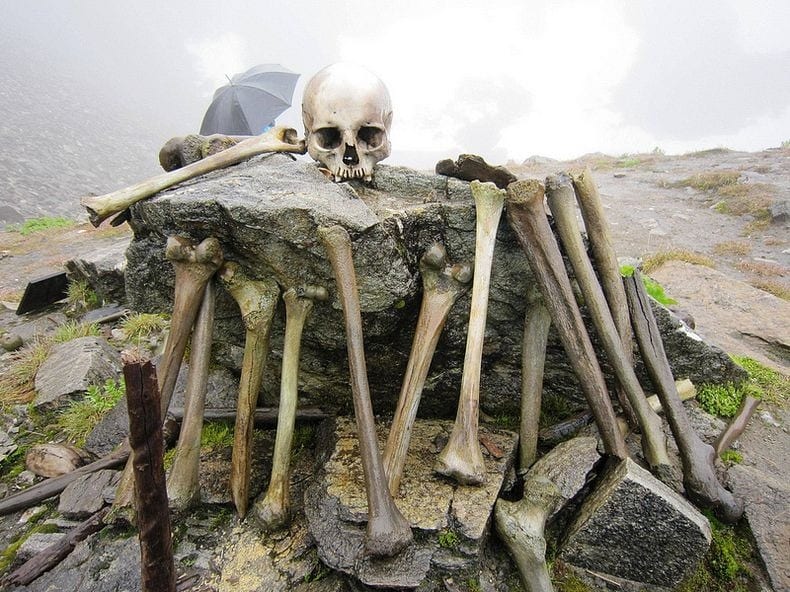
Photo Credit: flickr/Vivek Shukla
Another popular but unproven theory was that the bones were the remains of a missing group of soldiers led by General Zorawar Singh who got lost and died on the way back from the battle of Tibet in 1841.
But that was all pretty much just hypothesis, as they couldn’t identify the age of the bones.
It wasn’t until National Geographic assembled a team of scientists in 2004 to conduct more thorough testing that they discovered one of the above theories was actually pretty close to the truth.
Turns out those bones were from the 9th century. So – definitely not the soldiers from 1841.
And later DNA analysis by India’s Centre for Cellular and Molecular Biology found that there were two separate ethnic groups among the dead. About 70% were from Iran, while the rest were locals.
But what were they doing? And how did they die?
The most popular current theory is that a group of locals was guiding the larger, Iranian group through the mountains when they were all caught in a freak hailstorm – very similar to the ancient folk tale/song.
From marks on the bones, the stones were estimated to have been about 9 inches in circumference.
For reference, that’s right around the size of a baseball:

Photo Credit: Wikimedia Commons
For further reference, terminal velocity for a baseball is 95 MPH.
For even further reference, here’s what happened to Houston Astros player Delino DeShields after he got hit by just one baseball going at 90 MPH:

Photo Credit: Twitter/Bossip
Now imagine you’re in that group, traveling above tree level through the rocky, barren mountains, and all of a sudden it starts raining baseballs while you’re at the bottom of a bowl at 16,000 feet.
There’s simply nowhere to go:
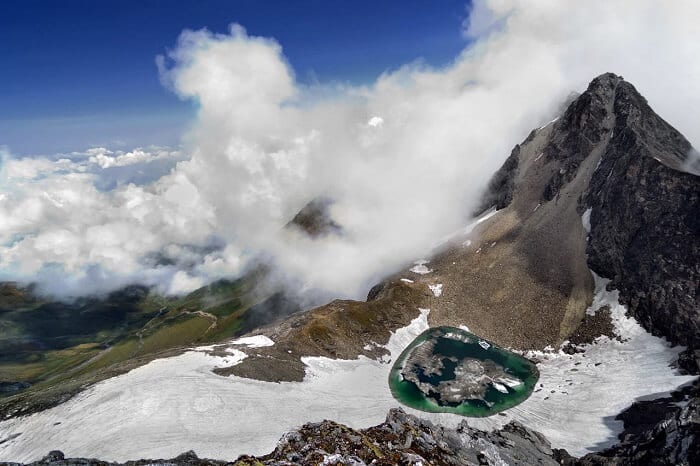
Photo Credit: AAHVAN Adventures
At that point, maybe you stop imagining. It’s pretty much only bad news from there.

Photo Credit: Undiscovered Indian Treasures
Bad news and bones…
We’ve got more weird lakes where that came from! Check out this video and take a trip around the world in 60 seconds.
Want more great did you know? articles like these?
Check these out:






